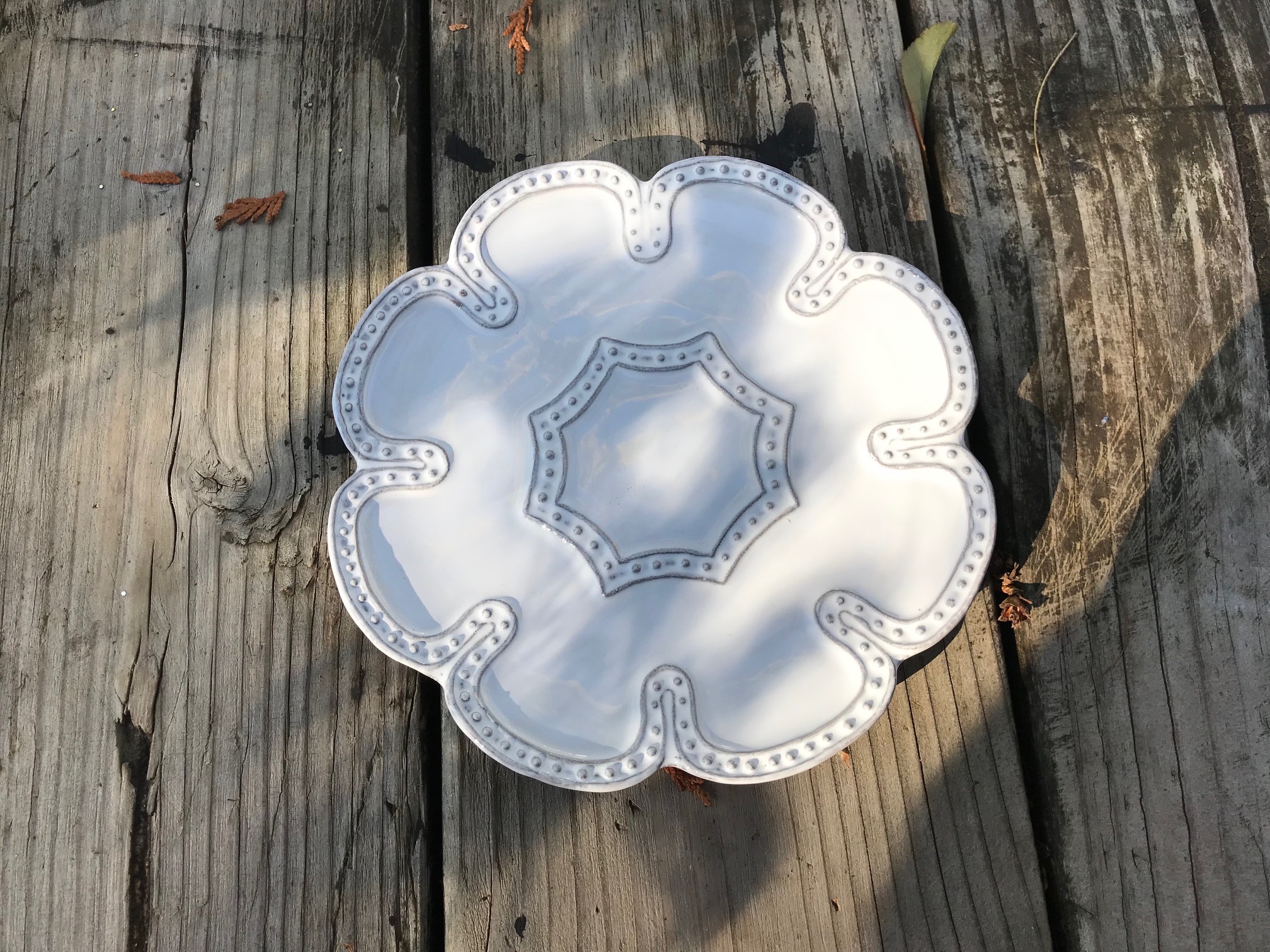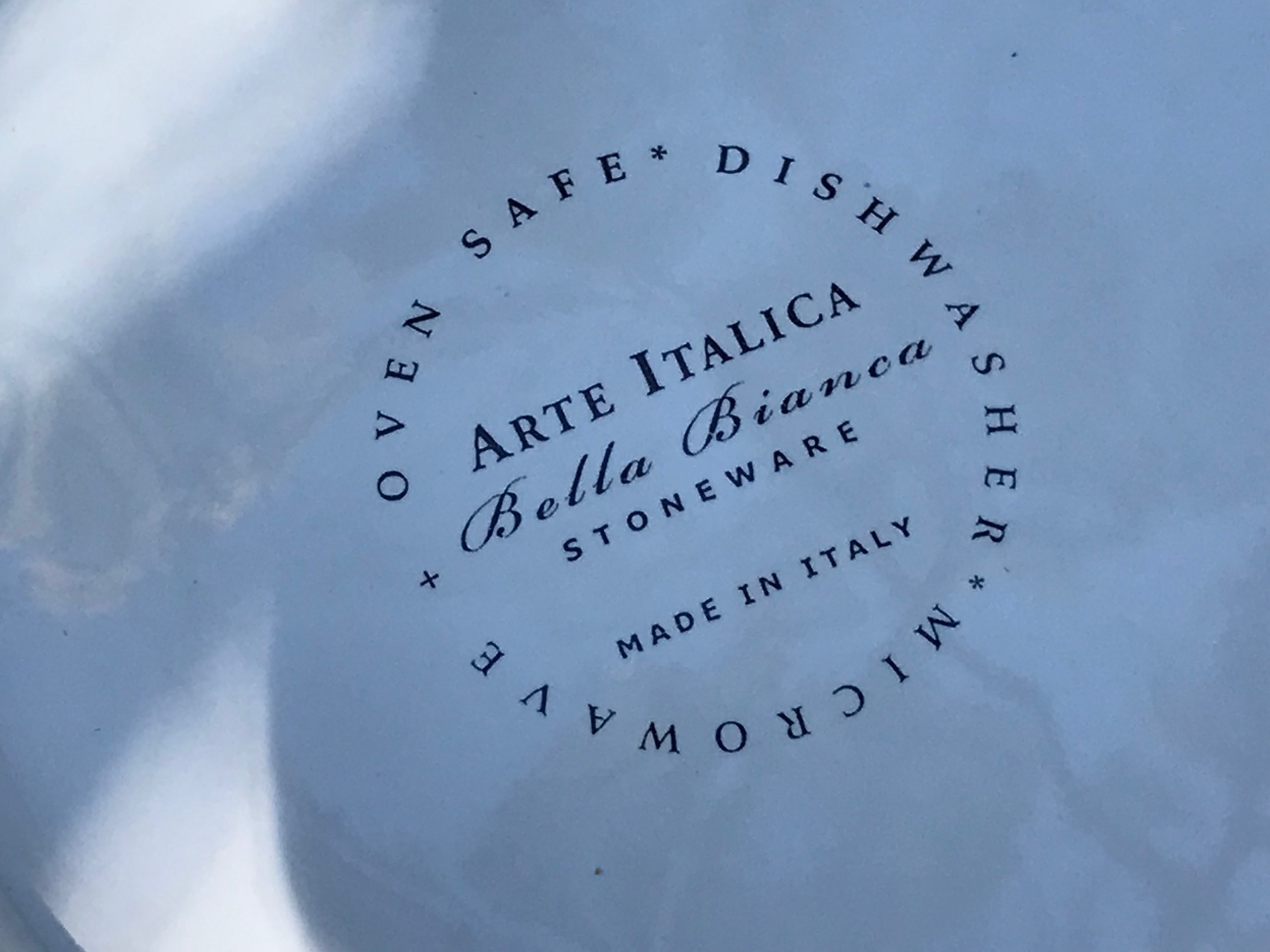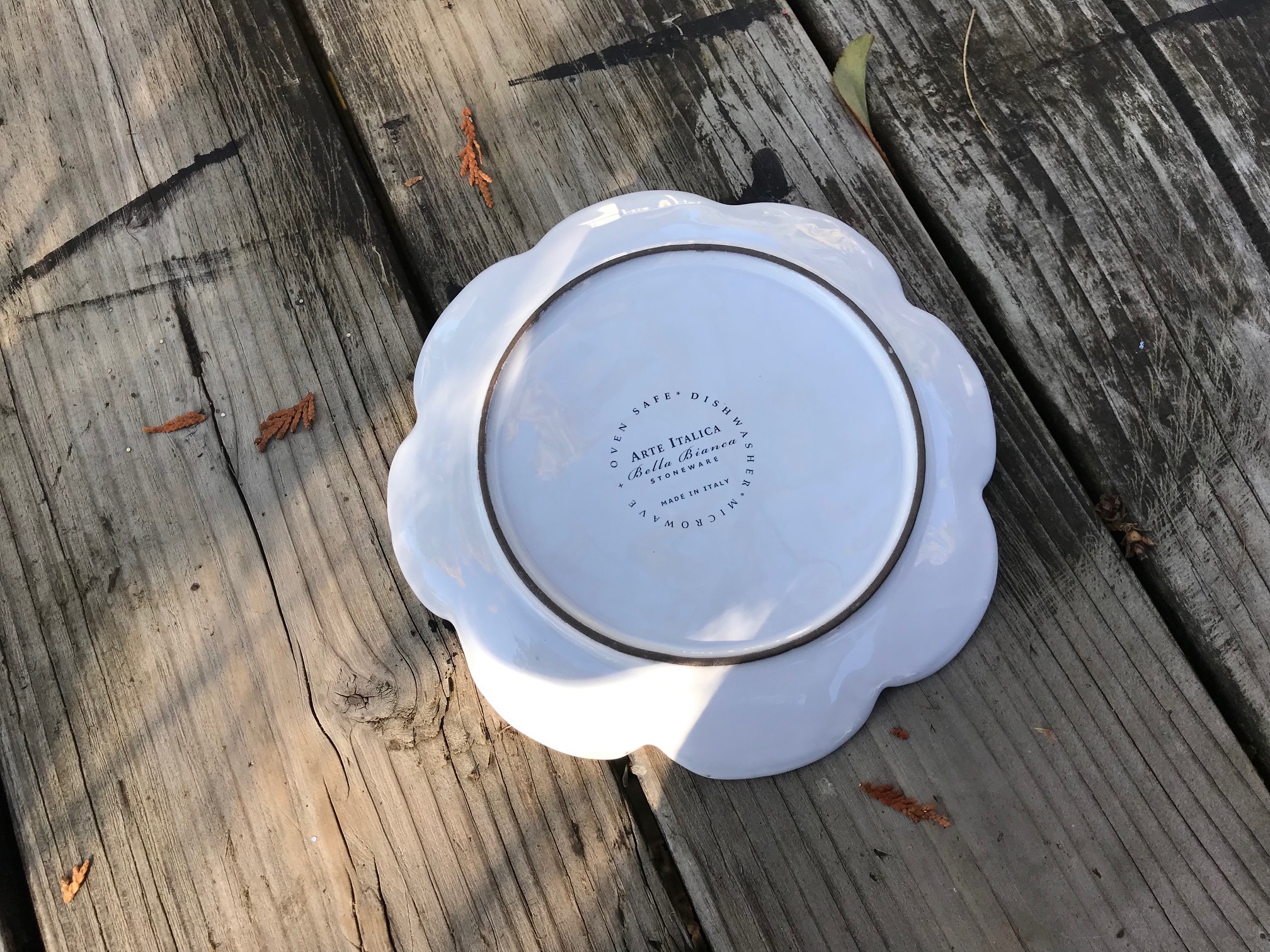“Made in Italy” Arte Italica Bella Bianca Stoneware: 3,821 ppm Lead. [90 ppm & up is unsafe in kids’ items.]
 Here is the full XRF reading for the food surface of the plate (a “Made in Italy” Arte Italica Bella Bianca Stoneware saucer with dark clay and white glaze) pictured here.
Here is the full XRF reading for the food surface of the plate (a “Made in Italy” Arte Italica Bella Bianca Stoneware saucer with dark clay and white glaze) pictured here.
Center of food surface of saucer:
- Lead (Pb): 3,821 +/- 144 ppm
- Barium (Ba): 248 +/- 89 ppm
- Zinc (Zn): 28,800 +/- 900 ppm
- Copper (Cu): 479 +/- 74 ppm
- Iron (Fe): 1,035 +/- 203 ppm
- Vanadium (V): 187 +/- 44 ppm
- Titanium (Ti): 757 +/- 90 ppm
- Zirconium (Zr): 23,800 +/- 800 ppm
XRF readings are done in “Consumer Goods Mode” for a minimum of 60 seconds unless otherwise noted. Results are science-based and replicable. Metals not listed above were not detected by the XRF instrument.
Is 3,821 ppm Lead a problem?
Why is this allowed?
The amount of Lead that is considered unsafe (and illegal) in a newly-manufactured item intended for use by children is anything 90 ppm Lead (or higher) in the paint, finish or glaze. Dishes (new and vintage) are not considered to be “items intended for use by children” and are not regulated in the same way children’s items are (with allowable limits on XRF-detectable levels of Lead.) It is my assertion that they should be. If a toy is considered unsafe at 90 ppm Lead, then a dish (which will usually be used by a child with greater frequency and more regularity than any particular toy!) most definitely should be considered unsafe at those same levels.
Current federal standards for dishware are simply not protective of children’s health. While a dish might meet current applicable federal standards for leach testing at the time of manufacture, there is no guarantee that the Lead in the glaze might not leach over time (especially with regular daily use – including normal use with acidic foods and beverages like tomato sauce, lemon juice, alcohol, vinegar and coffee.) I discuss that more in this post – link.
To see the Lead-free dishes I use in my home, click here.
As always, thank you for reading and for sharing my posts.
Please let me know if you have any questions.
Tamara Rubin
#LeadSafeMama
Never Miss an Important Article Again!
Join our Email List



